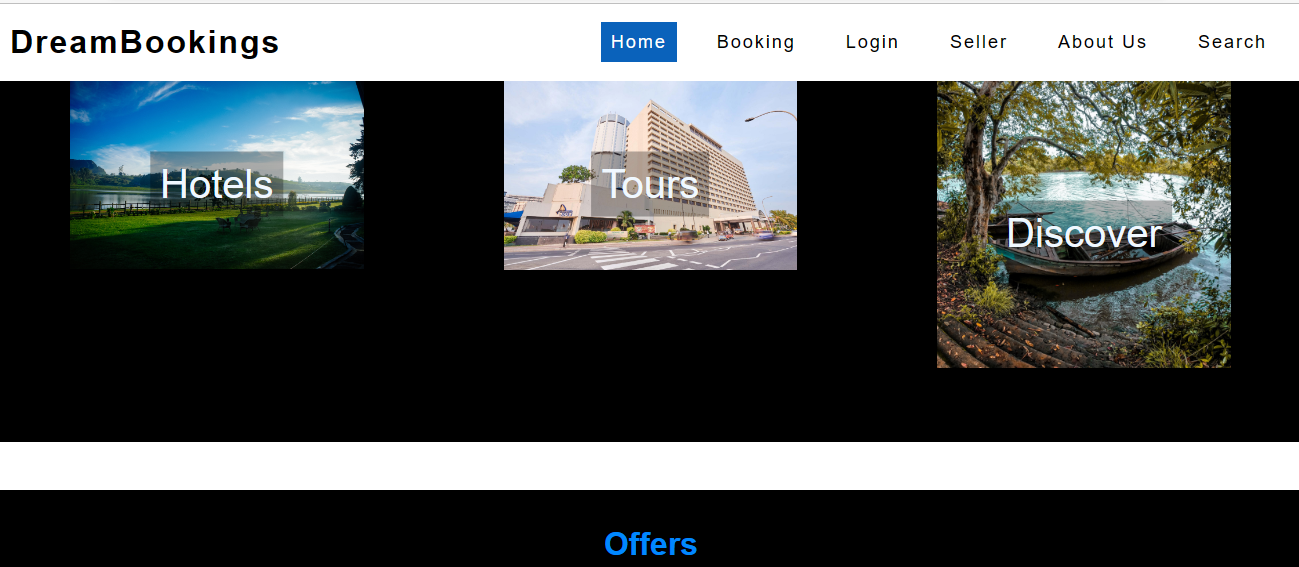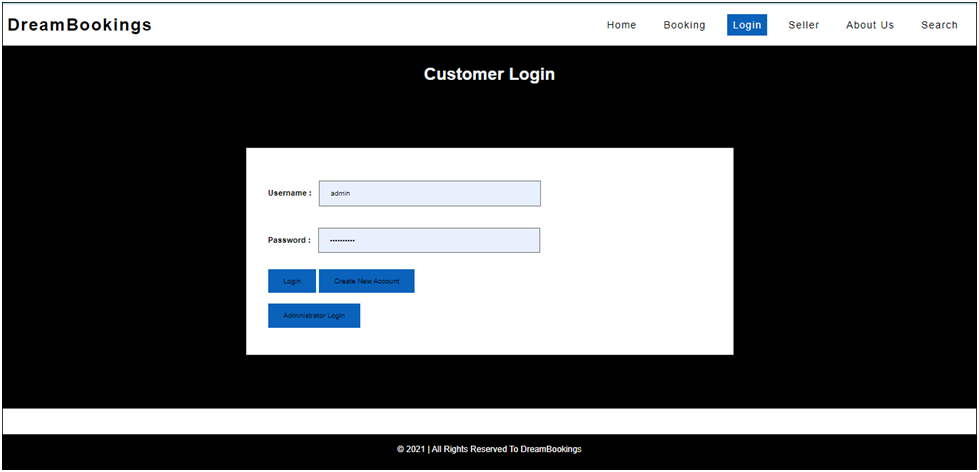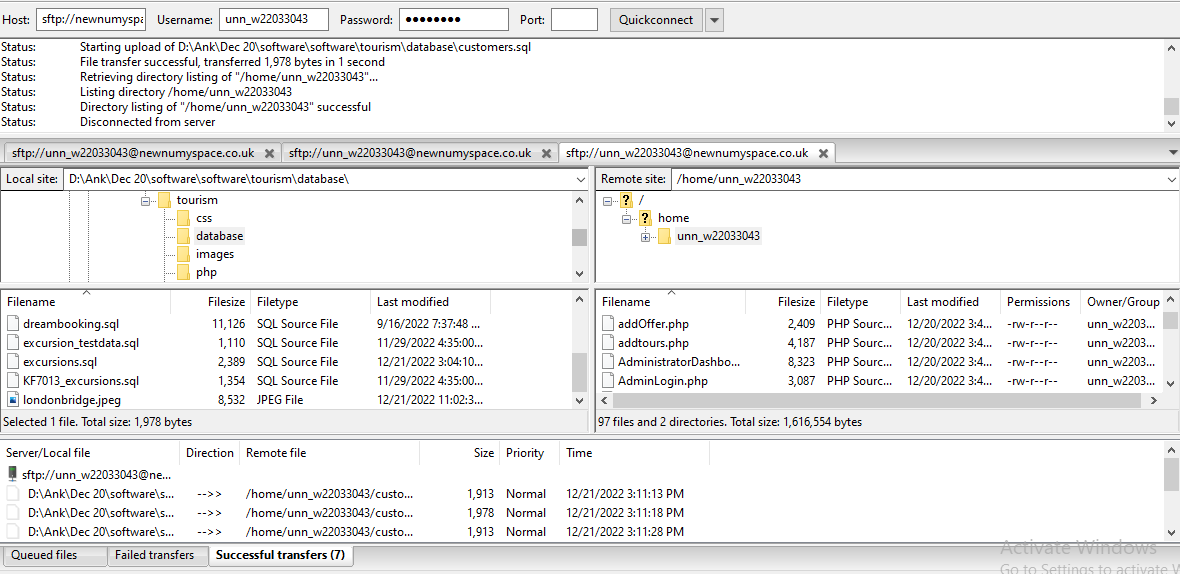KF7013 Website Development and Deployment Assignment Sample
Module code and Title: KF7013 Website Development and Deployment Assignment Sample
Introduction
“Secure Website Development Assessment” which is to be discussed here is based on “Website Development and Deployment” is based on assessment of the secure website development and its deployment as well. “Secure Website Development” is an iterative technique which consists of design of the application, vulnerability testing, implementation, as well as monitoring. After the development of the website, the deployment is also performed here. The dynamic web solution using “CSS”, “HTML5”, “PHP”, as well as “SQL” is to be developed and deployed as well and apart from this, the security of the developed web solution is critically reviewed by using various literature journals which is to be discussed in this report.
Part A
Describe the excursion company and its website needs
The excursion company which has been used here is the “Dreambookings” company and its particular website as well. “DreamBookings” is a free website of a travel booking adviser which compares millions of cheaper flights which are international, “car hires”, “hotels”, “trains”, “airport taxis”, as well as also generates the information which is travel-related, like trips, tours, city cards, tickets, products of the travel, and more than that (Pezoulas et al. 2019). This particular “Dreambookings” company website has been created for a website of “tourist excursion booking” (Rajasulochana and Khizerulla, 2022).
The location of the excursions of the tourist for example city, country, region etc. has been included in the website and apart from this, the type of customers that the company website of the tourist excursion aims to attract such as “adventure seekers”, “families”, “luxury travelers”, as well as backpackers etc. as well as the “price range” as well as “brand personality” of the excursions, e.g., “luxury”, “budget”, “cultured”, “fun”, “adventurous”, as well as “sophisticated”, etc. are the points which have been covered and included here in this section. There are many needs that an excursion company might have for a website, but some of the most important ones would likely be:
-A way to showcase their excursions/tours
-A way to allow customers to book/reserve spots on excursions/tours
-A way to provide customers with payment options
-A way to offer customer support
-A way to promote special deals/discounts
-A way to collect customer feedback/reviews
Critical Review of the Website
The security of the web solution which is developed is critically reviewed here with respect to the various journals as well as appropriate academic literature.
According to Rajasulochana and Khizerulla 2022, the “E-banking” which is the personal service of banking on the Internet, is prevented with many identifiers in the bank (Rajasulochana and Khizerulla, 2022). “E-banking” enables paying invoices to different recipients which are necessary for this bank. This has been performed here on this website.
According to Manuela and Robert 2019, the mobility, personalization, deliveries on the similar day, as well as perhaps “artificial intelligence” all the elements have been helpful in shaping e-commerce in the near future (Ingaldi and Ulewicz, 2019). This is necessary in considering the necessary features which are necessary here and shops for the online standard is also discussed here. This has been used here in this website as well.
Part B
Critically review the security measures of websites
Security is an essential component of any website, particularly for a website like a tourist excursion that is handling sensitive customer information. As such, it is important to review the existing security measures of the prototype website for a fictional tourist excursion, and consider anything that could be added in the future to support increased security. At the outset, customer data should be encrypted and stored securely in databases.
The website should also be secured with a firewall to protect against malicious attacks and malware. Furthermore, the website should use secure protocols such as “SSL/TLS and HTTPS”, as well as trusted authentication methods such as two-factor authentication. This ensures that only authorized users are able to access the website, and that the data is encrypted while in transit (Caro, 2021).
The website should also take measures to protect against data breaches. This includes ensuring that the website is regularly monitored for any suspicious activity and that any unauthorized access attempts are blocked. Additionally, the website should have an incident response plan in place to respond to any data breaches that may occur.
The website should also have measures in place to protect against “Denial of Service (DoS)” attacks. This includes using firewalls to detect and block any malicious traffic, as well as using technologies such as caching and load balancing to ensure that the website remains available even during periods of high traffic.The website should also take steps to protect user accounts from unauthorized access.
This includes using strong passwords, two-factor authentication, and other security measures such as CAPTCHA codes. Additionally, the website should require users to change their passwords frequently and to use unique passwords for each account. The website should have measures in place to protect against phishing and other social engineering attacks (Wardhani, et al., 2019). This includes using email and web filtering technologies, as well as training users on how to recognize and respond to phishing emails. The website should also have policies in place to ensure that users are only accessing legitimate websites, and not malicious websites.
In the future, there are a number of additional measures that could be taken to support increased security on the website. This includes implementing automated threat detection and response systems to detect and respond to any suspicious activity. Additionally, the website should use artificial intelligence and machine learning technologies to detect and respond to any malicious activity. Additionally, the website should use technologies such as blockchain to securely store customer data and ensure its integrity.
\The security measures of the prototype website for a fictional tourist excursion appear to be adequate, but could be improved upon. The website currently uses an SSL certificate to encrypt all data transmitted to the server, which is a good start. All passwords should also be encrypted, and the website should use a strong password policy. Additionally, the website should regularly be tested for vulnerabilities, and any problems should be patched quickly.
 Figure 1: Home page of the website (Source: Self-created in Visual Studio Code)
Figure 1: Home page of the website (Source: Self-created in Visual Studio Code)
Another measure to consider is two-factor authentication. This will add an extra layer of security to the website, as users will have to enter a code sent to a trusted device in order to gain access. It is also important to incorporate measures to detect and prevent malicious users from accessing the website. This could include banning IP addresses that are associated with malicious activity, implementing rate limiting, and using firewalls to block malicious traffic (Harris, et al., 2019).
Moreover, there should be measures in place to identify and respond to any potential security incidents. This could include having a security team that monitors the system for suspicious activity, and having procedures in place to respond to any potential threats.
Overall, the security measures of the prototype website appear to be adequate, but could be improved upon. Implementing additional measures such as two-factor authentication, malicious user detection, and incident response plans could help to ensure that the website remains secure.In conclusion, security is an essential component of any website, particularly for a website like a tourist excursion that is handling sensitive customer information.
 Figure 2: The Customer Login Page (Source: Self-created in Visual Studio Code)
Figure 2: The Customer Login Page (Source: Self-created in Visual Studio Code)
The above snip shows the Customer Login Page in which the login details are clearly mentioned here which enhances the security system of the fictional webpage developed here by the utilization of the different languages in visual studio code. The login credential is also for the average and also the customer to view the various features of the page. Apart from that, the developed page consists of the different security measures for their E- booking system and also for the payment system.
Conclusion
It can be concluded here that all the necessary components such as the description of the excursion company and its website needs, critical review of the website, static content as well as database-driven content and a dynamic web solution have been clearly developed, deployed as well as discussed in this report. This has been performed in “Visual Studio Code” platform, “Xampp” and a localhost web server has been discussed clearly in this report. A Practical Web Solution has been developed using the “HTML5”, “CSS”, “PHP”, as well as “MySQL” based on which the security issues have been assessed here. The tourist excursion website and its necessary components have been clearly discussed here in this report as well.
Reference List
Journals
Pezoulas, V.C., Kourou, K.D., Kalatzis, F., Exarchos, T.P., Venetsanopoulou, A., Zampeli, E., Gandolfo, S., Skopouli, F., De Vita, S., Tzioufas, A.G. and Fotiadis, D.I., 2019. Medical data quality assessment: On the development of an automated framework for medical data curation. Computers in biology and medicine, 107, pp.270-283.
Wardhani, L.K., Faishal, A.A., Masruroh, S.U. and Sukmana, H.T., 2019, November. An implementation of user experience design: discovery, formative and evaluative method for developing tour guide service application. In 2019 7th International Conference on Cyber and IT Service Management (CITSM) (Vol. 7, pp. 1-7). IEEE.
Tavichaiyuth, N., Foojinphan, N., Leelahakorn, P., Kanchanakul, S. and Siriborvornratanakul, T., 2022. Covid-19 Travel Planner Mobile Application Design with Lean Product Process Framework. Augmented Human Research, 7(1), pp.1-9.
Caro, C., 2021. Web-based virtual tour for Tarlac’s Pilgrimage Churches. International Journal of Research Studies in Education, 10(8), pp.17-23.
Harris, P., Siddhi, R., Sricharan, S. and Suntharam, B., 2019. Bon Voyage: A travel Guide based on Web application.
Rajasulochana, D. and Khizerulla, M., 2022. Service Quality In SBI: An Assessment Of Customer Satisfaction On E-Banking Services. Journal of Positive School Psychology, pp.4585-4590.
Appendices
Appendix 1: Interface of Filezilla

Know more about UniqueSubmission’s other writing services:

